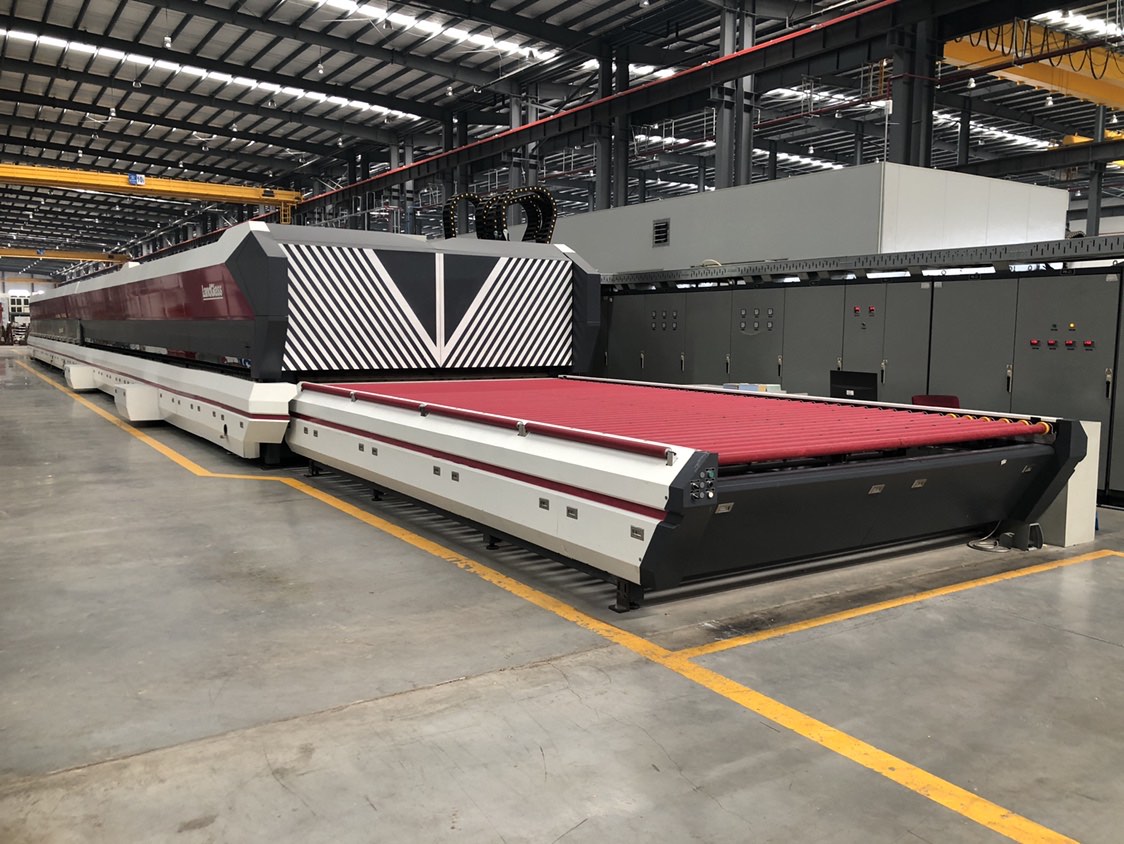Buying a glass tempering furnace is the largest investment for a glass processing enterprise. It could determine an enterprise's market value, the distribution of customer base, and overall profitability. Being in the glass processing machinery business for over 20 years, LandGlass has seen numerous successful or unsuccessful cases of investment in glass tempering furnaces. This article intends to help those who plan to invest in glass tempering machine to properly evaluate the operating environment and their own situations before making a purchasing decision.

4. Are all convection technologies the same? No, they are not the same
Three key factors for you to consider when evaluating the convection technology:
1)The proportion and efficiency of convection heating.
2)Whether the heat is distributed evenly.
3)Whether the temperature control is accurate.
At present, there are primarily three convection technologies in the industry: pipe convection, chamber convection, and OptiFlow convection. As a basic technology, pipe convection is the transitional technology between radiation furnace and convection furnace. Chamber convection is an upgraded technology based on pipe convection. OptiFlow convection is a further upgrade from the chamber convection, effectively improving the heat exchange efficiency and heating uniformity in the furnace for a better result when tempering double-silver and triple-silver Low-E glass. In addition, for true convection heating, the heating elements should be located in the positions where the convection system blows air, not the positions where the air returns.
5.Top and bottom full convection glass tempering furnace or top convection tempering furnace ?
The top convection glass tempering furnace uses air convection in its top part to heat the upper surface of the glass. The bottom part still retains the conventional radiation heating method. It will work well for those who have fewer Low-E glass orders.
Full convection tempering furnace adds convection devices to the bottom part to enhance the bottom heat transfer. This will avoid the spherical bending problems caused by the situation where the heat transfer rate of the upper glass surface is significantly higher than that of the lower surface when heating large-sized glass or coated glass thinner than 4mm in a top convection glass tempering furnace. It ensures that the top and bottom surfaces of the glass are heated simultaneously for better heating quality and higher productivity. Meanwhile, the full convection glass tempering furnaces can better heat Low-E glass with complicated coatings.
6. In an era where quality dominates, the touchstone for tempered glass is the anisotropy and flatness
Anisotropy, also known as the iridescence, is a common defect seen on tempered glass in the curtain wall industry. It directly destroys the overall aesthetic effect of a building, may even result in product return. A good glass tempering furnace will minimize anisotropy through appropriate structural configurations and manufacturing processes, improving the quality of building curtain walls.
Flatness is also an essential indicator of tempered glass. Laminated glass in particular has a higher requirement on flatness. The national standard has clear definitions on how to measure glass flatness, especially the overall bow and the waviness. At present, advanced glass tempering furnaces can achieve overall bow≤1‰, center waviness≤0.05/300mm, and edge waviness≤0.10/300mm in 6 mm clear glass mass production, far higher than the national standard.
Customers should consult the actual machine users or do the field research before buying the machine rather than relying merely on advertising.